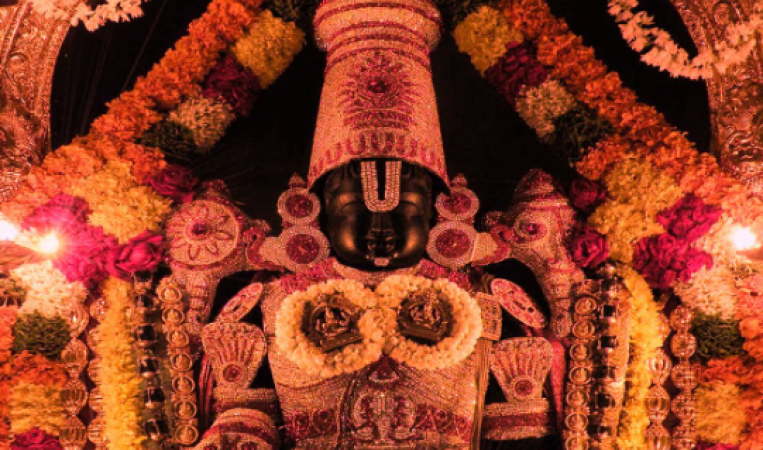
Sri Venkateswara Temple, also known as the Tirumala Temple or Tirupati Balaji Temple, is a renowned Hindu temple dedicated to Lord Venkateswara, an incarnation of Lord Vishnu. Located atop the Tirumala Hills in the Chittoor district of Andhra Pradesh, India, it is one of the most visited and revered temples in the country. This article delves into the rich history of Sri Venkateswara Temple, exploring its origins, architectural marvels, religious significance, and the spiritual practices associated with worshiping at this sacred site.
History of Sri Venkateswara Temple:
The history of Sri Venkateswara Temple dates back to ancient times, with mentions of the deity Lord Venkateswara found in several ancient Hindu scriptures, including the Rigveda and the Puranas. However, the establishment of the temple in its present form can be attributed to the Vaishnava saint, Sri Ramanujacharya, who visited the region in the 11th century. Under his guidance, the temple was constructed and flourished as a significant spiritual center.
The temple witnessed various renovations and expansions under the rule of different dynasties, such as the Cholas, Pallavas, and Vijayanagara Empire. The rulers and devotees alike contributed to the temple's growth and development, enhancing its architectural grandeur and religious significance. Today, the temple stands as a splendid example of Dravidian architecture and is a symbol of devotion and faith for millions of devotees.
Architectural Marvels of Sri Venkateswara Temple:
The Sri Venkateswara Temple complex is an architectural masterpiece, showcasing the Dravidian style of temple construction. The temple's main entrance, known as the Mahadwaram, leads to a series of majestic gateways and mandapas (halls), each adorned with intricate carvings and sculptures depicting various mythological stories and divine beings. The Gopuram (tower) of the main shrine stands tall, displaying exquisite craftsmanship and intricate detailing.
The sanctum sanctorum houses the idol of Lord Venkateswara, beautifully adorned with jewelry and flowers. The temple complex also encompasses several other shrines dedicated to various deities, including Lord Rama, Goddess Lakshmi, Lord Hanuman, and Lord Krishna. Each shrine has its unique architectural style and significance, adding to the divine aura of the temple.
Religious Significance and Rituals:
Sri Venkateswara Temple holds immense religious significance for Hindus worldwide. Devotees believe that a pilgrimage to this sacred site grants divine blessings, spiritual purification, and the fulfillment of wishes. The temple follows a strict set of rituals and practices that have been passed down through generations.
The daily rituals at the temple commenced in the early hours of the morning with Suprabhatam, a melodic hymn sung in praise of Lord Venkateswara. Devotees can participate in various sevas (offerings) such as Archana, Abhishekam, and Sahasranama Archana, wherein they offer prayers, flowers, and other sacred items to the deity. The Prasadam (blessed food) offered at the temple, including the famous Tirupati Laddu, is considered highly auspicious and is distributed among the devotees.
The temple also hosts several festivals throughout the year, with the Brahmotsavam being the most significant. This nine-day festival witness grand processions, cultural performances, and elaborate rituals, attracting devotees from far and wide. Annadanam, the act of providing free meals to devotees, is an integral part of the temple's service and is believed to bring immense merit to the donors.
Worshiping at Sri Venkateswara Temple:
To worship at Sri Venkateswara Temple, devotees need to follow certain procedures and guidelines. The temple provides free darshan (viewing of the deity) for all visitors, but special tickets can be purchased for faster access and a closer view of the deity. Devotees are required to dress modestly, with traditional attire preferred. Men usually wear dhoti and angavastram, while women opt for sarees or traditional salwar-kameez.
Before entering the temple, devotees need to cleanse themselves by taking a bath and performing pradakshina (circumambulation) of the sacred hills. Photography and mobile phones are prohibited within the temple complex to maintain the sanctity of the place. Devotees offer their prayers to the deity, seek blessings, and may choose to make donations or contributions towards the temple's maintenance and charitable activities.
Sri Venkateswara Temple stands as a divine abode, beckoning millions of devotees from all walks of life. Its rich history, awe-inspiring architecture, and religious significance make it a revered site of worship and pilgrimage. The temple's rituals, festivals, and practices provide a spiritual experience that brings devotees closer to the divine. As the sacred chants reverberate and the fragrance of incense fills the air, Sri Venkateswara Temple continues to inspire and uplift the hearts and souls of those who seek solace, faith, and divine blessings.
Sawan Adhika Maas Starts on July 18, 2023
The Moche Civilization: Unveiling Peru's Intricate Pottery and Art
Why should non-vegetarian food should not be eaten in the month of Sawan?